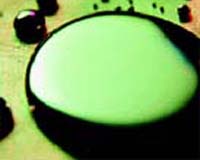| . |  |
. |
Canberra, Australia (UPI) Oct 26, 2009 Oil leaking into the Timor Sea from the Montara rig could be five times faster than previously thought. The spill began Aug. 21 after an accident on PTTEP Australasia's offshore rig nearly 100 miles off the remote Western Australian coast, known for its rich marine environment. PTTEP estimates that between 300 and 400 barrels of oil a day is pouring into the ocean, but the Australian Department of Resources, Energy and Tourism said Thursday it could be as much as 2,000 barrels a day. Conservationists estimate that the oil is covering an area of at least 5,800 square miles. A fourth attempt to intercept the leak has been unsuccessful and is now planned for Tuesday. When the accident occurred, PTTEP had estimated it would take 50 days to plug the leak, 1.6 miles below the seabed. Australia's federal environment minister, Peter Garrett, said he was confident everything possible was being done to stop the oil leak. The Australian Maritime Safety Authority said that the cost of the cleanup had reached more than $5 million. PTTEP has agreed to meet the costs. The opposition's spokesman for environment Greg Hunt called for the government to bring in international experts to deal with the situation. "It's been nine and a half weeks of complacency, nine and a half weeks of belching oil and nine and a half weeks of continued failure," Hunt told the Australian Broadcasting System. He said the spill is a marine disaster of epic proportions and the federal government is "ignoring it". "It's an out of sight out of mind philosophy. If this spill were occurring off the coast of Sydney or Melbourne the federal government would be up in arms," Hunt said. Following a three-day expedition through the polluted waters, WWF Director of Conservation Gilly Llewellyn said, "There were times when we were literally in a sea of oil from left to right and as far as we could see ahead of us -- it was heavily oiled water and it was sickening because in this we were seeing dolphins surfacing." Llewellyn stressed that, based on previous oil disasters, the damage from Montara will be long lasting. "We know that oil can be a slow and silent killer. Impacts from the Exxon Valdez disaster are still being seen 20 years later, so we can expect this environmental disaster will continue to unfold for years to come," she said. Meanwhile, on Friday PTTEP took control of five new exploration licenses, giving PTTEP access to an additional 571 square miles of Australian waters near the leaking Montara rig. Federal Resources Minister Martin Ferguson and Australia's Foreign Investment Review Board supported the $11 million purchase of new oil assets. Australian Marine Conservation Society spokesman Darren Kindleysides said PTTEP's track record should have been considered before access was granted to new oil fields. "Clearly PTTEP's track record has been pretty shabby in recent months," Kindleysides said, The Age reports. "Major questions still hang unanswered over why this spill happened and why it hasn't been plugged yet." Despite concerns about the impact of the two-month oil leak, the Australian government stressed that the company would be "treated the same as any other company." "PTTEP is a major international oil company with strong technical capability and financial capacity," said government spokesman Michael Bradley. "The causes of the Montara well leak are unknown at this stage. PTTEP will continue to be treated by government on a non-discriminatory basis in its activities and operations here in Australia," Bradley said. Share This Article With Planet Earth
Related Links Our Polluted World and Cleaning It Up
 Scientists struggle for mercury answers
Scientists struggle for mercury answersOrlando, Fla. (UPI) Oct 25, 2009 Scientists studying how mercury pollution affects Florida's environment say mercury levels in many rivers and lakes have yet to be measured. With extensive wetlands, waterways and more than 7,000 lakes, Florida remains a vulnerable target of the poisonous metal, experts say. How mercury is absorbed into the tissue or flesh of livings things in these watery environments in ... read more |
|
| The content herein, unless otherwise known to be public domain, are Copyright 1995-2009 - SpaceDaily. AFP and UPI Wire Stories are copyright Agence France-Presse and United Press International. ESA Portal Reports are copyright European Space Agency. All NASA sourced material is public domain. Additional copyrights may apply in whole or part to other bona fide parties. Advertising does not imply endorsement,agreement or approval of any opinions, statements or information provided by SpaceDaily on any Web page published or hosted by SpaceDaily. Privacy Statement |